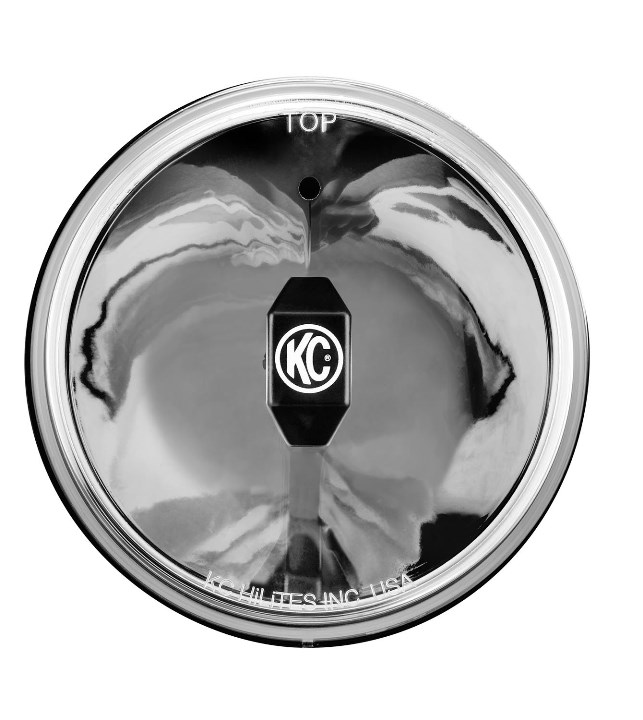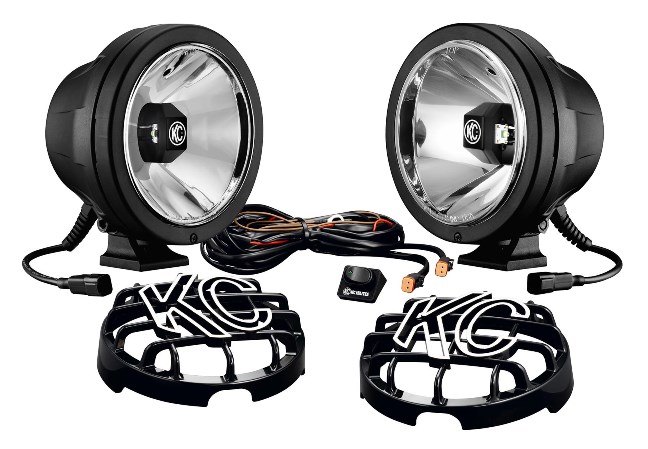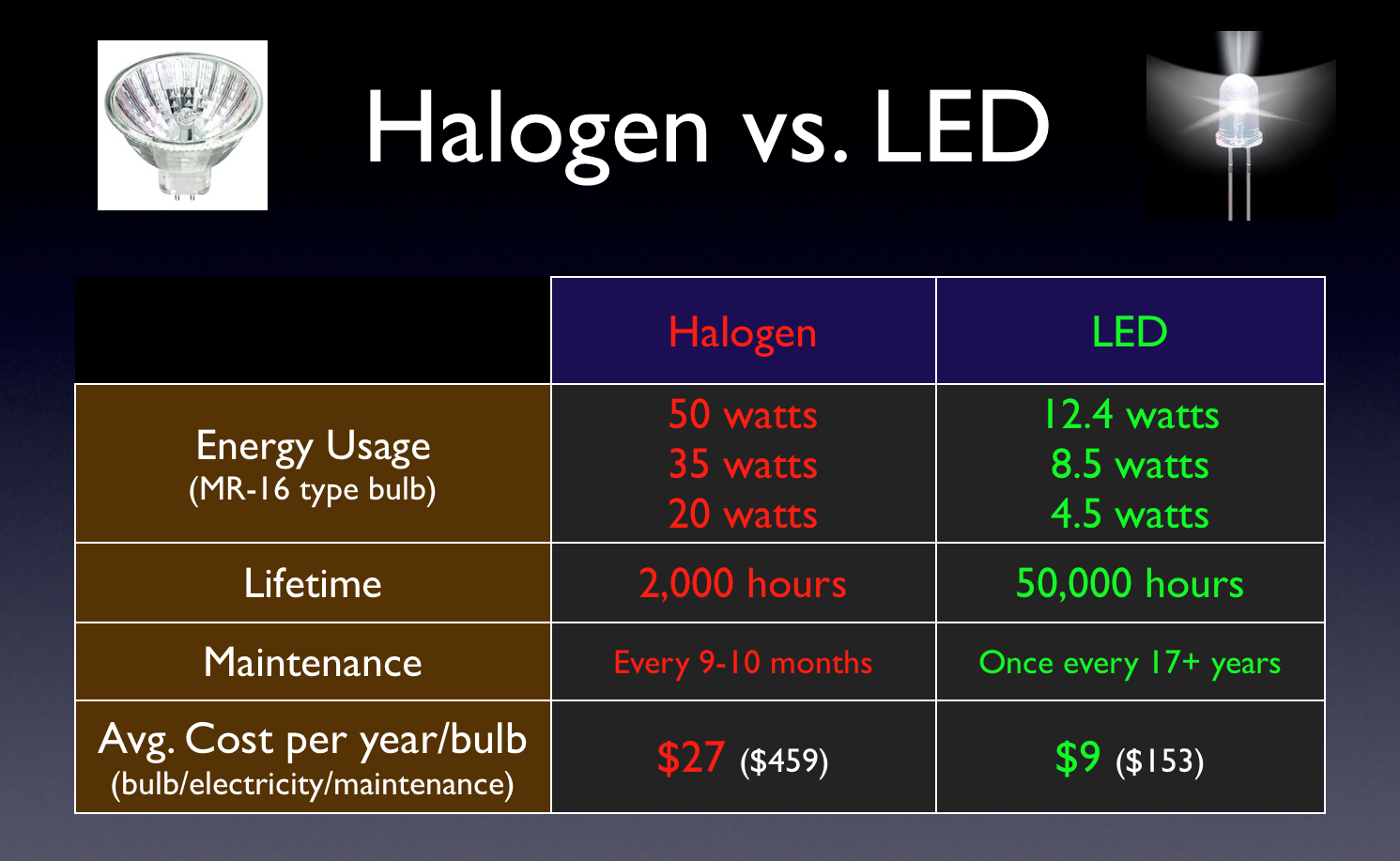Lighting Tech: LED vs. Halogen
 If there is one thing that has increased its presence in off-road and Jeeps, it’s the LED light. You’re seeing it more and more, but why is that? What is the advantage over halogen lamps? We’ll answer that in this article. But first, we must define what each is.
If there is one thing that has increased its presence in off-road and Jeeps, it’s the LED light. You’re seeing it more and more, but why is that? What is the advantage over halogen lamps? We’ll answer that in this article. But first, we must define what each is.
Halogen lamps are a form of incandescent lamps that use tungsten filament and a halogen gas: either iodine or bromine. The combination of these produces a light through the halogen cycle, which is a chemical reaction that redeposits evaporated tungsten back onto the filament as it burns. This increases its lifespan and can burn brighter than standard lights.

An LED light is best known as a light-emitting diode, which is a two-lead semiconductor light source. When voltage is applied, electrons are able to recombine with electron holes within and that releases energy from photons called electroluminescence. The color produced is determined by the energy of the photon and the band gap (the energy range in a solid where no electron states can exist) of the semiconductor. An LED will also pulse on and off and this is because pulse-width modulation is being used to change the brightness of some LED lights.

LEDs hold an advantage over halogen lights thanks to the need for lower power for a brighter light. For example, a 50-watt halogen bulb will produce light that a 12.4-watt LED bulb can produce. It can also last far longer than the typical halogen, which will last about 2,000-2,500 hours as opposed to the 50,000+ hours an LED light will last.
Another advantage is heat. Halogen bulbs burn hotter, while LEDs will produce very little heat for the same power. LEDs can also be fairly durable. Soldering skill aside, an LED light can take more of a beating when compared with the filament of the halogen. There will also be less glass to worry about when you do drop an LED, for the LED itself is made inside an epoxy base.
However, LEDs also come at a price. They are typically far more expensive than their halogen equivalents. LEDs can also be narrowly focused, so if a lens isn’t designed for that focused light, an LED won’t be an improvement. LEDs are also prone to temperature changes, and over-driving an LED in high ambient temperatures can cause overheating. This is why you see heat sinks on many LED off-road lights. Finally, the more power you put into an LED, the less efficient the LED becomes and power regulation becomes important.
Chime in with your thoughts on the forum. >>
Comparison Chart Via [LEDinAZ.com]
